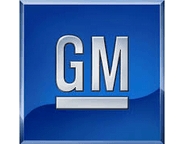Steel Markets

GM Strike "a High-Stakes Game for Both Sides"
Written by Sandy Williams
October 3, 2019
United Auto Workers are in their third week of a strike against General Motors. The back and forth of negotiations continue with the union reportedly rejecting a counterproposal offered by GM on Monday.
In a letter to union representatives on Tuesday, Terry Dittes, UAW GM vice president and director, outlined the problems with the proposal:
“This proposal that the Company provided to us on day 15 of the strike did not satisfy our contract demands or needs. There were many areas that came up short like health care, wages, temporary employees and job security to name a few. Additionally, concessionary proposals still remain in the company’s proposal as of last night.”
Temporary workers, meant to fill in for UAW workers during employee absences, are paid a starting wage of $15.78 per hour. The UAW says these employees (about 7 percent of GM’s workforce) are used as full-time employees with a “temporary” designation and no path to permanent higher-paid positions. GM’s average labor costs are about $13 more than its foreign, nonunion competition, says the Center for Automotive Research. Employing temporary workers, at lower wages, is a strategy for GM to be more cost-competitive.
Health care is another sticking point in the negotiations. GM says it pays about $1 billion per year on employee health care, or about $1,700 to $2,000 per month per worker. GM backed off its initial proposal to raise the employee contribution from 3 percent to 15 percent, but is still seeking a higher contribution.
“It’s a high-stakes game for both sides,” said Joe Langley, associate director, light vehicle production forecast, North America, at IHS Markit.
“GM is looking at a very expensive footprint going forward with autonomous vehicle and electric vehicle development, and they don’t want an expensive legacy cost,” Langley told the Detroit Free Press.
UAW-GM employees began collecting strike checks on Monday. Anderson Economic Group estimates that GM is facing $25 million per day in lost profits.
“The situation for workers is equally severe,” added Patrick Anderson, Principal and CEO of Anderson Economic Group, noting that there are 46,000 striking workers who are firmly into their second week of striking, and that businesses in GM’s supply chain have begun to lay off employees. “We estimate their combined direct earnings losses to be about $33 million per production day this week, with cumulative earnings losses around $266 million.” The reduction in employee income equates to about $68 million lost from federal income and payroll taxes.
AEG says broader economic impacts will be felt as the strike continues.
“The cost of a strike, to both workers and the company, grows steadily in the first week, and then pyramids out into the surrounding economy,” explains Brian Peterson, AEG’s director of public policy and economic analysis. “As we move closer to two full weeks of a strike,” he continues, “the effect on the economies of Michigan, Indiana, Ohio, and Ontario has become acute, with both union and non-union workers suffering significant income losses. Even if the strike ends today, those losses will still be felt.”
The UAW strike has led to a number of layoffs at GM facilities in Canada and Mexico due to a shortage of parts. So far about 4,500 workers have been impacted in Canada and, on Tuesday, GM announced that 6,000 workers in Silao, Mexico, will be laid off. The Silao layoffs expand the number of non-union layoffs to approximately 10,000 workers. The strike is also starting to impact manufacturers who supply production materials to the automaker.
Analysts at Moody’s and Econoclast predict that if the strike is prolonged it will affect key economic indicators and GDP, although a several month shutdown is not likely.
“If the strike lasts through the end of the year it will reduce fourth-quarter GDP by 0.2 of a percentage point. If the strike extends into next year, then the economic damage could become more significant,” Moody’s said in a research note.
If the strike did last two or three months, one could expect fourth-quarter real GDP growth to slow from 2 percent to perhaps 1.8 percent, Michael Cosgrove, principal at The Econoclast, told Newsweek. He added, “It would be surprising if this strike lasted more than 30 days.”

Sandy Williams
Read more from Sandy WilliamsLatest in Steel Markets

CRU: Sheet import demand softens as domestic price gains have slowed
US domestic sheet price gains have begun to slow as previously pulled-forward demand has led to a decline in orders.

CMC looks beyond Arizona micro-mill woes to long-term viability of construction mart
Despite the economic and geopolitical upheaval of the last five years, CMC President and CEO Peter Matt points out that the construction market has been an essential element of the way forward.

US importers face stricter rules under revamped S232 tariffs
“CBP expects full compliance from the trade community for accurate reporting and payment of the additional duties. CBP will take enforcement action on non-compliance," the agency said in a March 7 bulletin.

Steel exports rebound in January
US steel exports recovered to a five-month high in January after having fallen to a two-year low in December. This growth follows four consecutive months of declining exports.

Construction spending drops marginally in January
Construction spending edged down slightly in January, slipping for the first time in four months. The US Census Bureau estimated spending at a seasonally adjusted annual rate of $2,196 billion in January, down 0.2% from December’s downward revised rate. The January figure is 3.3% higher than a year ago. January’s result, despite the slight erosion, […]
